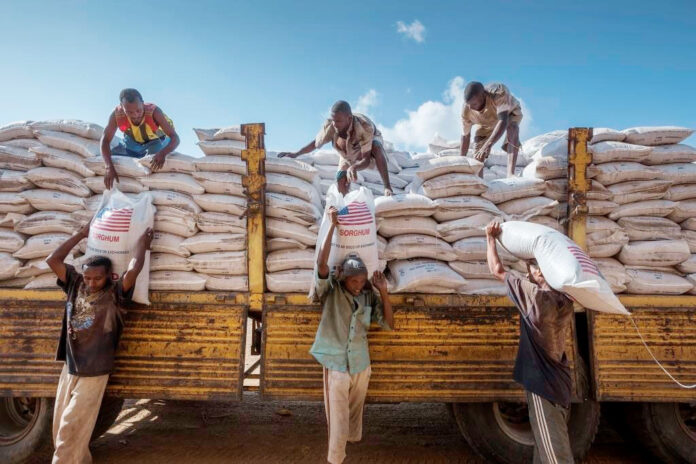Every country, particularly the developing countries like Pakistan, do need foreign assistance in one form or the other for its development and accelerating the pace of economic growth and undertaking development projects, programmes and policies for the welfare and well-being of the people.
The main objectives of the federal budget for the current financial year 2024-24, included “supporting vulnerable section of society through pro-poor initiative” and “education and skill development of the youth”. among others.
It is pertinent to mention here that a separate document containing information regarding Pakistan’s development partners and assistance /aid promised by them for the federal/provincial governments and autonomous bodies no longer form part of the huge bundles of budget documents. Foreign Assistance document was not there with huge piles of budget documents last year and is also missing this year as well
According to the information gathered from the experts and official sources concerned, Pakistan’s external resources are derived from a combination of financial instruments, including project loans and grants, programme loans and other loans. The aim and objective of seeking foreign or external financial assistance . can by and large be described as “promoting economic and social development in the developing countries”. It can also be defined as “administered transfer of resources from a donor country or international agency to developing countries with a view to encourage economic growth”. Foreign aid as such can be in the form of money, goods or technical assistance and this can be between two countries (bilateral) or with institutions (multilateral).
Foreign aid is also sought for bridging both the economy’s balance of payments gap and investment gap.. That was why project and technical assistance alone as such are not sufficient. A large part of the foreign assistance is required in the shape of food and commodity aid. Project assistance does not simply finance the import of capital goods and related services but also meets a part of local currency expenditure as well . Thus aid flow, be it project, programme and technical assistance, accompanied by commodity imports may generate counterpart local currency funds that are used for financing the development expenditures.
As a matter of fact, many developing countries do not have sufficient funds for providing public goods such as education or transportation systems or clean water and waste disposal facilities. Although such goods are essential for development, their rate or return is so uncertain that private investors are unwilling to provide them on a large scale. Foreign aid as such can also be the substitute for private capital in those instances, providing the funds for investment in public goods that the international capital market will not supply to those developing or would supply at a higher interest rate. In principle, foreign aid could be a major source of capital, fueling the growth of developing countries and these to promote economic and human development.
Foreign aid can only be good if it is the result or outcome of financing investment in any appropriate productive capacity. Increasing output , so to say, allows debt and interest to be repaid. If the aid is used to finance the current account deficits or consumption, then there is no real investment and there will be resultant failure of economic growth. Aid can also become a burden . It, therefore, entails . an effective and efficient external aid management with objectives that match those of the government
Foreign aid or assistance as such can only be useful if it is utilized productively and efficiently, otherwise developing countries are likely to face a sort of financial crisis and be caught up in some debt trap..
In any such case,the sources pointedly concluded, the sequence of events could be a) as debt service liabilities rise without any corresponding increase in revenue, the government would need to set aside an increasing share of budgetary resources for debt servicing; b) the level of debt servicing would soon begin to affect the routine government expenditure, often requiring additional borrowing to meet the rising contractual payment obligations; the country would slowly slide into the debt trap and in such a situation more and more borrowings would be required to service the accumulated debt, resultantly creating a vicious circle; the rising debt service obligations eventually would lead to default i.e. the inability to honour principal and interest payment commitments; and in such a case the default is generally followed by prolonged negotiations with the creditors individually or collectively ( Paris Club, London Club), leading to rescheduling, restructuring, or write-off of the external debt. The relief programmes in such a situation generally include reform conditions to redeem the government finances and put the economy back on track.
Project loans and grants are received from specialised International Financial Institutions and friendly countries with some specific purposes falling under the following broad categories:
Project loans and grants or Public Sector Development Programme (PSDP) of the Federal Government: are received for specific projects being executed by the federal and provincial governments and autonomous bodies such as WAPDA, PEPCO, National Highway Authority (NHA) and so on.
There are also certain projects which are somehow kept out of PSDP which are executed by the federal and provincial governments and autonomous bodies by receiving project loans and grants;
Programme loans are provided for budgetary support and are as such lined/ tied with the achievement of some specific targets and goals. Programme loans as such not only help in stabilizing the foreign exchange reserves but also in generating rupee counterpart to meet the country’s development needs ;
Other loans by and large comprise loans from Islamic Development Bank, sovereign bonds, sukuk bonds and so on, received from non-transferable sources generally by way of payment as well as for the budgetary support.
It is pertinent to mention here that a separate document containing information regarding Pakistan’s development partners and assistance /aid promised by them for the federal/provincial governments and autonomous bodies no longer form part of the huge bundles of budget documents. Foreign Assistance document was not there with huge piles of budget documents last year and is also missing this year as well.























